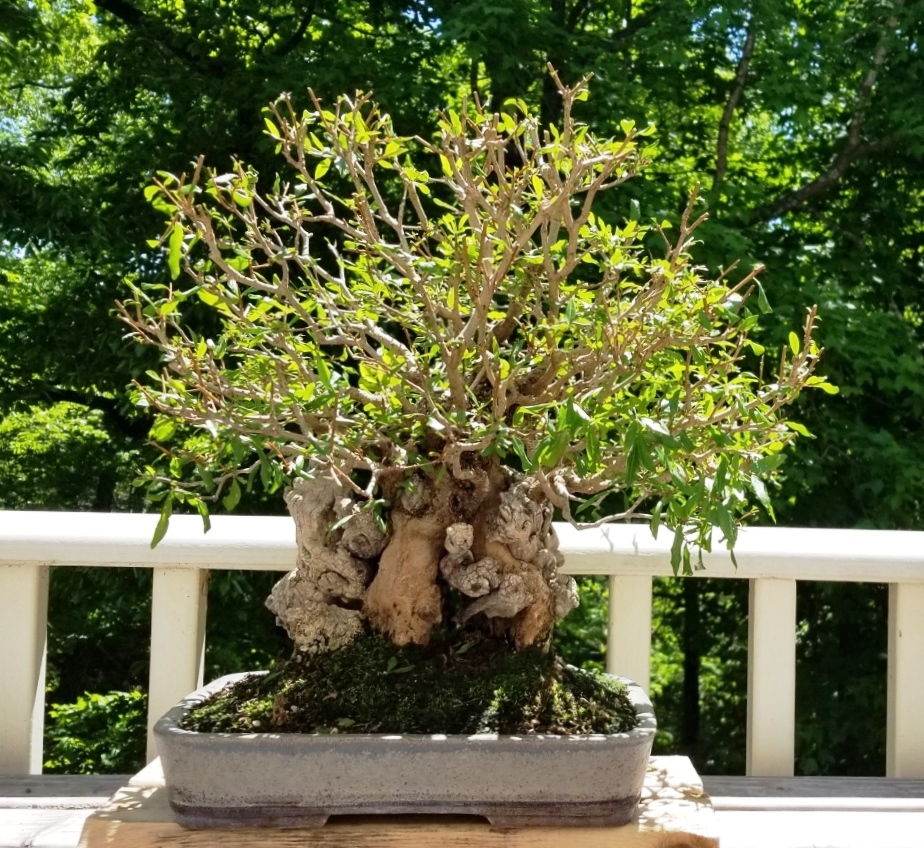|
Gallagyl
Gallagic acid is a polyphenolic chemical compound that can be found in the ellagitannins, a type of tannin, found in ''Punica granatum'' (pomegranate).Antioxidant, antimalarial and antimicrobial activities of tannin-rich fractions, ellagitannins and phenolic acids from Punica granatum L. Reddy Muntha K., Gupta Sashi K., Jacob Melissa R., Khan Shabana I. and Ferreira Daneel, Planta medica, 2007, vol. 73, no5, pp. 461-467, It is a building block of the corresponding tannin punicalagin, punicalin, punicacortein C and 2-O-galloyl-punicalin. References Ellagitannins Pomegranate ellagitannins {{aromatic-stub ... [...More Info...] [...Related Items...] OR: [Wikipedia] [Google] [Baidu] |
Punicalin
Punicalin is an ellagitannin. It can be found in '' Punica granatum'' (pomegranate) or in the leaves of '' Terminalia catappa'', a plant used to treat dermatitis and hepatitis. It is also reported in '' Combretum glutinosum'', all three species being Myrtales, the two last being Combretaceae. It is a highly active carbonic anhydrase inhibitor. Chemistry The molecule contains a gallagic acid component linked to a glucose Glucose is a sugar with the Chemical formula#Molecular formula, molecular formula , which is often abbreviated as Glc. It is overall the most abundant monosaccharide, a subcategory of carbohydrates. It is mainly made by plants and most algae d .... References {{pomegranate ellagitannin Pomegranate ellagitannins Carbonic anhydrase inhibitors ... [...More Info...] [...Related Items...] OR: [Wikipedia] [Google] [Baidu] |
Punica Granatum
The pomegranate (''Punica granatum'') is a fruit-bearing deciduous shrub in the family Lythraceae, subfamily Punicoideae, that grows between tall. Rich in symbolic and mythological associations in many cultures, it is thought to have originated from Afghanistan and Iran before being introduced and exported to other parts of Asia, Africa, and Europe. It was introduced into Spanish America in the late 16th century and into California by Spanish settlers in 1769. It is widely cultivated throughout West Asia and the Caucasus region, South Asia, Central Asia, north and tropical Africa, the drier parts of Southeast Asia, and the Mediterranean Basin. The fruit is typically in season in the Northern Hemisphere from September to February, and in the Southern Hemisphere from March to May. The pomegranate and its juice are variously used in baking, cooking, juice blends, garnishes, non-alcoholic drinks, and cocktails. Etymology The name ''pomegranate'' derives from medieval Latin ... [...More Info...] [...Related Items...] OR: [Wikipedia] [Google] [Baidu] |
Punicalagin
Punicalagin (''Pyuni-cala-jen'') is an ellagitannin, a type of phenolic compound. It is found as alpha and beta isomers in pomegranates (''Punica granatum''), '' Terminalia catappa'', '' Terminalia myriocarpa'', and in '' Combretum molle'', the velvet bushwillow, a plant species found in South Africa. These three genera are all Myrtales and the last two are both Combretaceae The Combretaceae, often called the white mangrove family, are a family of flowering plant Flowering plants are plants that bear flowers and fruits, and form the clade Angiospermae (). The term angiosperm is derived from the Ancient Greek, G .... Research Punicalagins are water-soluble and hydrolyze into smaller phenolic compounds, such as ellagic acid. There were no toxic effects in rats on a 6% diet of punicalagins for 37 days. In laboratory research, punicalagins had carbonic anhydrase inhibitor activity. See also * Ellagic acid * Punicic acid References {{pomegranate ellagitannin ... [...More Info...] [...Related Items...] OR: [Wikipedia] [Google] [Baidu] |
Punicacortein C
Punicacortein C is an ellagitannin, a phenolic compound. It is found in the bark of ''Punica granatum The pomegranate (''Punica granatum'') is a fruit-bearing deciduous shrub in the family Lythraceae, subfamily Punicoideae, that grows between tall. Rich in symbolic and mythological associations in many cultures, it is thought to have originat ...'' (pomegranate).Tannins and Related Compounds. XLI. : Isolation and Characterization of Novel Ellagitannins, Punicacorteins A, B, C, and D, and Punigluconin from the Bark of Punica granatum L. Tanaka Takashi, Nonaka Gen-Ichiro and Nishioka Itsuo, Chemical & Pharmaceutical Bulletin, 1986-02-25, 34(2), pages 656-663abstract The molecule contains a gallagic acid component. References Pomegranate ellagitannins {{aromatic-stub ... [...More Info...] [...Related Items...] OR: [Wikipedia] [Google] [Baidu] |
Ellagitannins
image:Castalagin.svg, 130px, Castalagin is a representative ellagitannin, characterized by coupled gallic acid substituents The ellagitannins are a diverse class of hydrolyzable tannins, a type of polyphenol formed primarily from the oxidative linkage of galloyl groups in 1,2,3,4,6-pentagalloyl glucose. Ellagitannins differ from gallotannins, in that their galloyl groups are linked through C-C bonds, whereas the galloyl groups in gallotannins are linked by depside bonds. Ellagitannins contain various numbers of Hexahydroxydiphenic acid, hexahydroxydiphenoyl units, as well as galloyl units and/or Sanguisorbic acid, sanguisorboyl units bounded to sugar moiety. In order to determine the quantity of every individual unit, the hydrolysis of the extracts with trifluoroacetic acid in methanol/water system is performed. Hexahydroxydiphenic acid, created after hydrolysis, spontaneously lactonized to ellagic acid, and sanguisorbic acid to sanguisorbic acid dilactone, while gallic acid remains ... [...More Info...] [...Related Items...] OR: [Wikipedia] [Google] [Baidu] |
